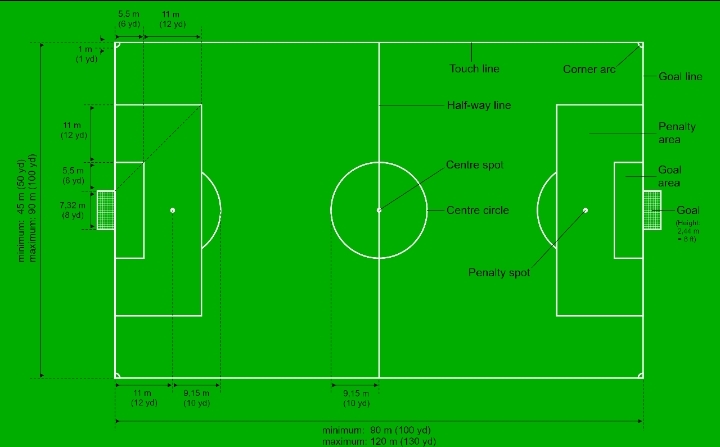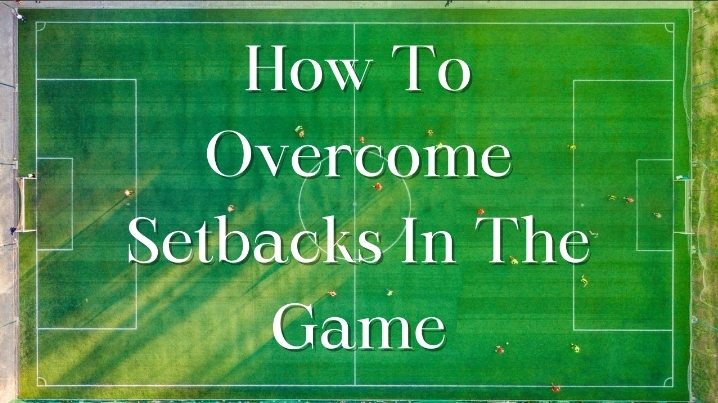Soccer is the most popular sport in the world, with over 4 billion fans globally. However, there is often confusion about how big a soccer field is. While many people refer to a soccer field as a “pitch,” the official dimensions can vary based on the level and age group of play.
Understanding soccer field sizes is crucial for players, coaches, fans, and field owners alike. We will break down the exact length and width regulations for soccer pitches by age and skill level, from youth leagues up to the professional ranks. We’ll also look at key components and markings on a pitch so you can become an expert on all things related to soccer field dimensions.

Soccer Field Dimensions for Youth Players
For young players just learning the game, smaller fields are recommended to match their physical abilities and require more touches on the ball. The US Youth Soccer Association provides guidelines on appropriate soccer field sizes from Under-6 through Under-19.
Here is an overview of the recommended soccer field dimensions by age group:
U6: Length 25-35 yards, Width 15-25 yards, Goals 4 x 6 feet, Ball Size 3
U8: Length 25-35 yards, Width 15-25 yards, Goals 4 x 6 feet, Ball Size 3
U10: Length 50-70 yards, Width 30-50 yards, Goals 6.5 x 12 feet, Ball Size 4
U12: Length 70-80 yards, Width 45-55 yards, Goals 6.5 x 18.5 feet, Ball Size 4
U13: Length 100-130 yards, Width 50-100 yards, Goals 8 x 24 feet, Ball Size 5
Some key things to notice are the gradual increases in field length, width, and goal size as players get older. Ball size also scales up appropriately. By the U13 age group and older, fields are getting closer to regulation size in preparation for high school soccer.
High School Soccer Field Dimensions
Once players reach high school, soccer field dimensions start matching the size used for professional matches. However, there are still some minor differences depending on the players’ ages and skill levels.
Here are the standard soccer field dimensions for high school:
Ages 14-15 (Freshman): Length – 110 yards, Width – 65 yards
Ages 15-16 (JV): Length – 110 yards, Width – 75 yards
Ages 16-18 (variety): Length – 120 yards, Width – 75 yards
For all levels of high school play, the goal size should be 8 feet high by 24 feet wide, and a size 5 ball is used.
As you can see, freshman soccer is played on a slightly more compact field than a regulation professional pitch. But by ages 16-18 when players are on varsity, the dimensions match that of a professional field.
These incremental size increases from middle school to high school allow players to gradually adapt to the larger field over time. The familiar dimensions also help high school teams transition to college and pro levels after graduation.
College Soccer Field Dimensions
For college athletes playing in the NCAA, there are specific regulations when it comes to soccer field dimensions and markings. These standards help ensure fair play across different college conferences and championship tournaments.
According to NCAA guidelines, here are the required dimensions for a college soccer field:
– Length: 110-120 yards
– Width: 70-80 yards
– Goal Size: 8 feet high, 24 feet wide
– Ball Size: 5
In addition, there are other field requirements, like having a bench area for each team and video/camera platforms set up on each end line. The field surface must be cut to a grass height between 1-2 inches.
White boundary lines around the field should be between 4-5 inches wide. The halfway line across the field and all other field markings should be 10-12 inches wide.
College soccer goals must also be properly anchored and have netting attached to catch balls and prevent overruns. The goal posts and crossbar are typically aluminum or steel and must be the correct width and diameter.

Professional Soccer Field Size Regulations
At the professional level, soccer field dimensions are regulated by FIFA, the international governing body for the sport. FIFA outlines strict standards for pitch sizes, especially for international matches and major tournaments like the World Cup.
For professional matches, here are the typical dimensions required by FIFA:
Length: 110-120 yards (100-130 yards allowed)
Width: 70-80 yards (64-100 yards allowed)
As you can see, there is some flexibility in the length and width, but FIFA prefers pitches to stay in the 110-120-yard length and 70-80-yard width range.
For important international matches like World Cup qualifiers, the field requirements are more precise:
Length: 115 yards
Width: 74 yards
FIFA also provides specifications on boundary dimensions around the field. For example, there should be a minimum of 6 yards of space behind each goal line if possible.
Professional fields are also required to have certain markings, like the halfway line, center circle, penalty area, and corner area. We’ll cover the dimensions and meaning of each of those components next.

Parts of a Soccer Field: Dimensions and Markings Explained
A soccer field contains some crucial components that each serve a specific purpose in the game. Let’s take a look at the dimensions and meaning behind key parts of the pitch:
Halfway Line: Marks the halfway point of the field. It is a line drawn from the touchline to the touchline across the width of the field.

Center Circle: A circular marking in the middle of the field with a radius of 10 yards. It surrounds the halfway line. Used for kickoffs.

Penalty Area: Also known as the “18-yard box”, it is a rectangular area extending 18 yards from each goal post and 44 yards wide.

Penalty Arc: Semi-circular arc with a 10-yard radius at the edge of the penalty area. Helps referees enforce the offside rule.

Corner Area: A quarter circle drawn inside each field corner with a 1-yard radius. Used to mark corner kick placement.

Goal Area: Rectangle in front of each goal measuring 6 yards from the goal line and 20 yards wide. Goal kicks are taken from this area.

Penalty Spot: White circular mark 12 yards in front of each goal where penalty kicks are taken from.

Soccer Field FAQs
Let’s wrap up this guide on soccer field dimensions by answering some common FAQs:
Why is a soccer field called a “pitch”?
The term “pitch” originated in the 1500s when the sport was played primarily on public grazing fields that were “pitched” or marked off by field boundaries.
What are the dimensions of a futsal court compared to a soccer field?
Futsal is played on a hard court surface about 25-42 yards long and 15-25 yards wide – much smaller than a full-size soccer pitch.
How many laps around a soccer field is a mile?
It takes approximately 17.5 laps around the perimeter of a full-size professional soccer pitch to complete 1 mile.
How does a soccer field compare in size to other sports fields?
Football field – 120 yards long (same as soccer), 53.3 yards wide
Baseball field – Baseline 90 feet (30 yards)
Basketball court – 94 feet long, 50 feet wide
Why are soccer field dimensions sometimes shown in meters?
International football organizations like FIFA and UEFA use the metric system, so field dimensions for matches under their jurisdiction are listed in meters. 1 yard = 0.9144 meters.
Conclusion
Whether you’re a player, coach, referee, or fan, understanding soccer field dimensions is an important part of the game. This guide provided a detailed look at pitch sizes and regulations across all levels of play.
Key takeaways:
Youth soccer fields are smaller to accommodate young players, then grow larger as ages and abilities increase.
High school teams use nearly full-size fields, with varsity matches played on the same 120 x 75-yard dimensions as professionals.
NCAA and FIFA outline official college and pro soccer field regulations, usually 110-120 yards long by 70-80 yards wide.
Key components like the center circle, penalty area, and goal box have standard dimensions and markings.
Many iconic stadiums have unique field dimensions that add character. Wembley Stadium is one of the largest at 130 x 100 yards.







